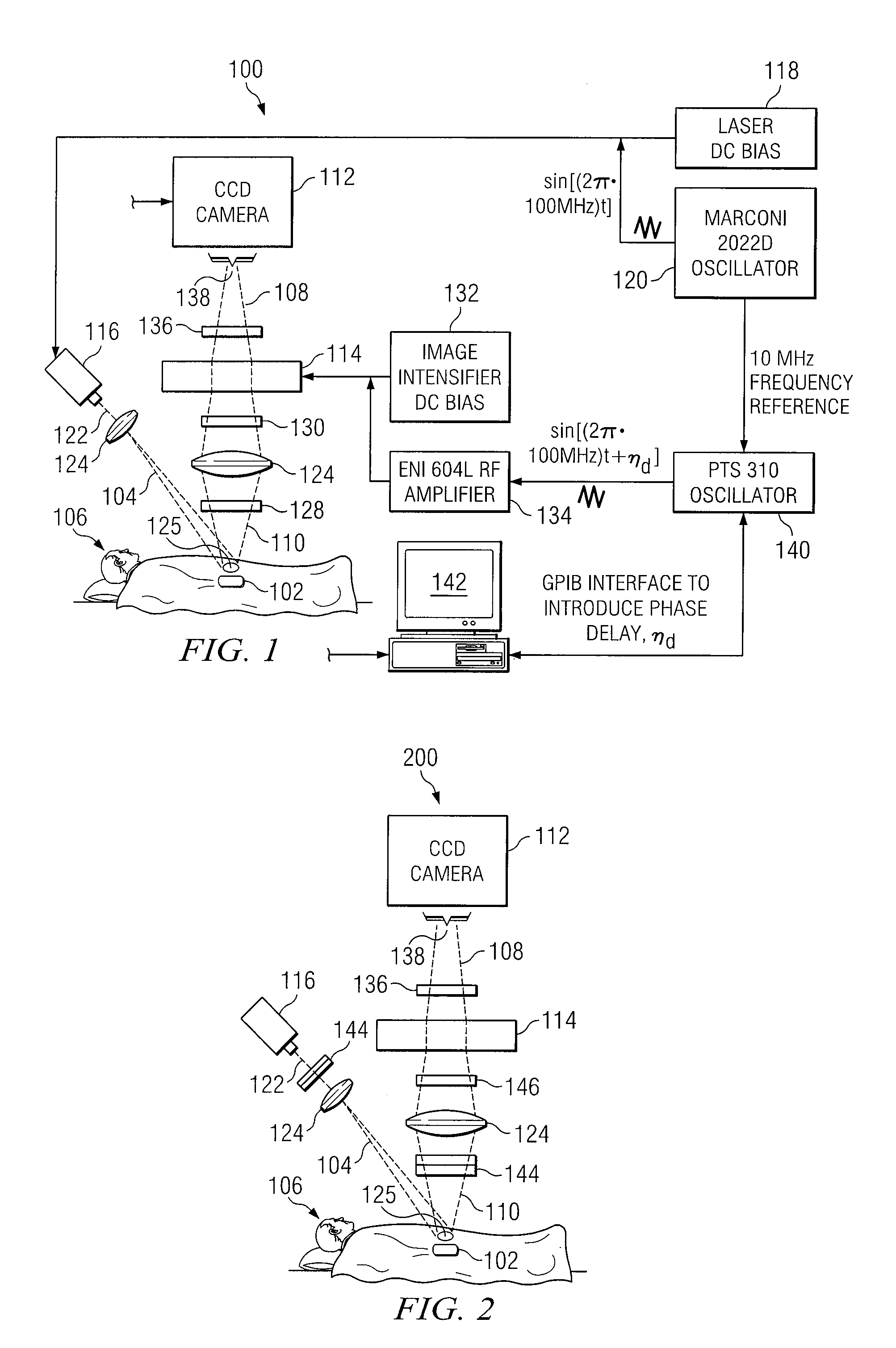Method and system for near-infrared fluorescence contrast-enhanced imaging with area illumination and area detection
a near-infrared fluorescence contrast and imaging technology, applied in the field of biomedical imaging, can solve problems such as difficult to solve underdetermined inverse problems, and achieve the effect of efficient excited and more data
- Summary
- Abstract
- Description
- Claims
- Application Information
AI Technical Summary
Benefits of technology
Problems solved by technology
Method used
Image
Examples
Embodiment Construction
[0015]FIG. 1 is a schematic illustrating a system for excitation area illumination and area detection using near-infrared (“NIR”) frequency-domain photon migration (“FDPM”) imaging techniques according to one embodiment of the present invention. In particular, system 100 generates three-dimensional (“3D”) images of fluorescent target 102 within a light scattering material (e.g., tissue) based on emission light detected at a two-dimensional (“2D”) sensor surface. At a high level, system 100 delivers an intensity-modulated excitation light 104 into the tissue of a body 106 to cause stimulated emission of fluorescent target 102. Emission light 108 from the fluorescent target 102 is detected by intensified charge-coupled camera (ICCD) 112 via gain modulated image intensifier 114. A 3D image of fluorescent target 102 is generated based, at least in part, on excitation light 104 and emission light 108. System 100 provides several advantages over the prior art such as, for example, the abi...
PUM
| Property | Measurement | Unit |
|---|---|---|
| surface area | aaaaa | aaaaa |
| size | aaaaa | aaaaa |
| fluorescent lifetime | aaaaa | aaaaa |
Abstract
Description
Claims
Application Information
 Login to View More
Login to View More - R&D
- Intellectual Property
- Life Sciences
- Materials
- Tech Scout
- Unparalleled Data Quality
- Higher Quality Content
- 60% Fewer Hallucinations
Browse by: Latest US Patents, China's latest patents, Technical Efficacy Thesaurus, Application Domain, Technology Topic, Popular Technical Reports.
© 2025 PatSnap. All rights reserved.Legal|Privacy policy|Modern Slavery Act Transparency Statement|Sitemap|About US| Contact US: help@patsnap.com



